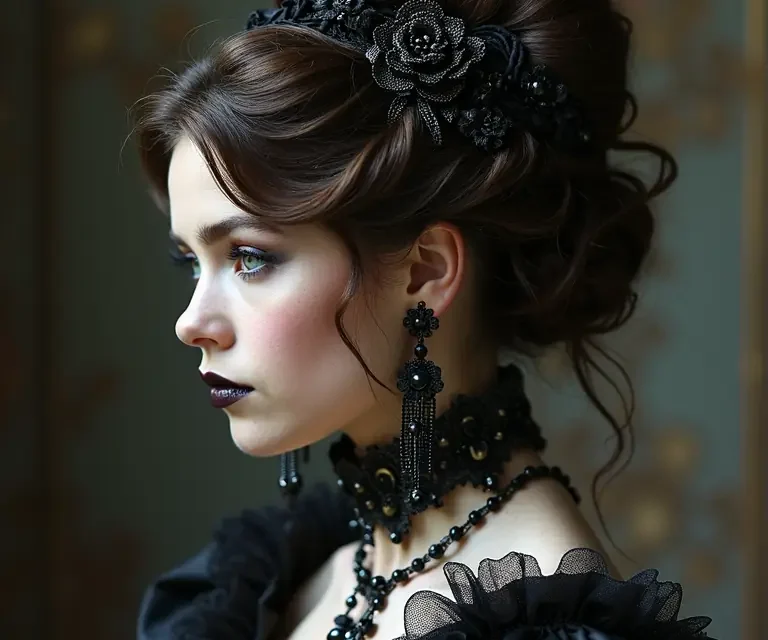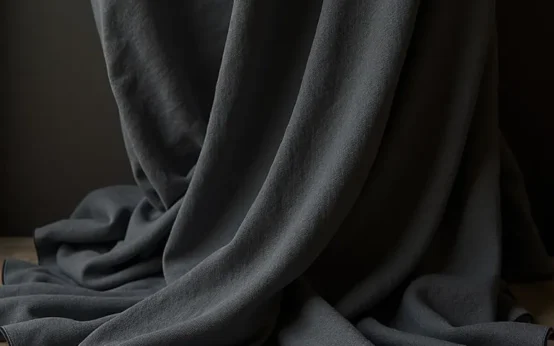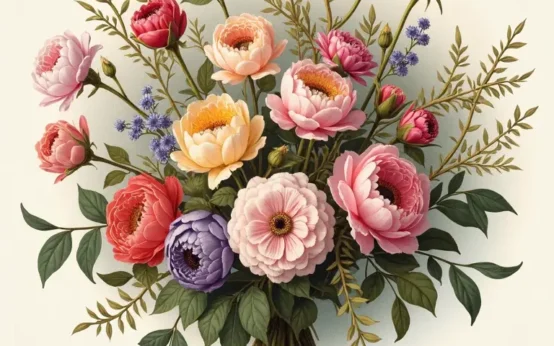The Victorian era (1837-1901) is often characterized by its rigid social codes, elaborate etiquette, and a pervasive preoccupation with death. While the mourning rituals of the time are well-documented – black clothing, veiled hats, and restricted social activities – a lesser-known, yet deeply significant, aspect of Victorian culture was the art of hairwork. Far from being a macabre practice, hairwork was a deeply sentimental and highly skilled craft, used to create lasting tributes to loved ones, commemorate significant life events, and even express romantic affection. This article will delve into the surprisingly consistent artistry of Victorian hairwork, exploring its historical context, techniques, symbolism, and enduring legacy.
A Culture Steeped in Sentimentality
To understand the prevalence of hairwork, it’s crucial to grasp the Victorian mindset. The 19th century witnessed a growing emphasis on domesticity, piety, and emotional expression, particularly within the middle and upper classes. The home was considered a sanctuary, and family relationships were highly valued. This sentimentality extended to mourning practices, which became increasingly formalized and elaborate throughout the period. The high mortality rates of the era, due to diseases like tuberculosis, cholera, and childbirth complications, meant that most Victorians experienced significant loss. Finding ways to memorialize the deceased, and maintain a connection to them, was paramount.
Before photography became widely accessible, personal keepsakes played an even more important role in preserving memories. Locks of hair had been exchanged as tokens of affection for centuries, but the Victorians elevated this practice to an art form. Hair was seen as a tangible link to the person, imbued with their essence and personality. It was considered a sacred relic, carefully preserved and often incorporated into jewelry, art, and decorative objects.
The History of Hairwork
While Victorian hairwork reached its peak during the mid-19th century, the practice itself dates back much further. Examples of hair jewelry have been found in ancient civilizations, including ancient Egypt and ancient Rome. During the Renaissance, hairwork became popular as a form of remembrance, often created into mourning jewelry following the death of a loved one. However, it was during the Victorian era that hairwork truly flourished, becoming a widespread and highly sophisticated craft.
The practice gained significant momentum with the rise of Queen Victoria herself. Following the death of her beloved husband, Prince Albert, in 1861, she famously wore black for the rest of her life and actively promoted mourning rituals. This royal endorsement further solidified the importance of mourning jewelry and, consequently, hairwork within Victorian society.
Techniques and Styles of Victorian Hairwork
Victorian hairwork wasn’t simply about gluing hair onto a surface. It involved a range of intricate techniques, requiring considerable skill and patience. Here are some of the most common methods:
- Hair Weaving: This involved carefully weaving strands of hair together to create patterns, often resembling flowers, leaves, or geometric designs. Different colors of hair (natural variations or sometimes dyed) were used to add depth and detail.
- Hair Braiding: Braids of varying thicknesses were used to create borders, embellishments, or entire pieces of jewelry.
- Hair Scrolling: Hair was tightly wound and shaped into delicate scrolls, often used to form letters, initials, or floral elements.
- Hair Modeling: Skilled artisans could mold hair into three-dimensional shapes, such as miniature portraits, cameos, or religious figures.
- Hair Pique Work: This technique involved embedding short lengths of hair into a base material, like velvet or paper, to create a textured surface.
These techniques were used to create a wide variety of hairwork items, including:
- Mourning Jewelry: Brooches, pendants, rings, earrings, and bracelets were commonly made using hair. These pieces often featured elaborate designs and were worn as a visible expression of grief.
- Hair Wreaths: Wreaths made entirely of hair were often displayed in homes as a lasting tribute to the deceased.
- Hair Screens: Decorative screens were created by weaving hair onto a frame, often featuring intricate scenes or personalized messages.
- Hair Pictures: Landscapes, floral arrangements, and even portraits were created using hair, meticulously arranged on a backing material.
- Hair Keepsakes: Smaller items, like hair lockets, hair bookmarks, and hair boxes, were popular for preserving individual strands of hair.
The Symbolism of Hairwork
Beyond its aesthetic appeal, Victorian hairwork was imbued with rich symbolism. Hair itself was considered a powerful symbol of life, love, and memory. Different colors and textures of hair could also carry specific meanings. For example:
- Blond Hair: Often associated with youth, innocence, and purity.
- Brown Hair: Represented stability, reliability, and a grounded nature.
- Red Hair: Symbolized passion, courage, and a fiery spirit.
- Gray Hair: Indicated wisdom, maturity, and a life well-lived.
Specific motifs and designs used in hairwork also held symbolic significance. Flowers, for instance, were often chosen for their specific meanings. Forget-me-nots represented remembrance, roses symbolized love and affection, and lilies conveyed purity and innocence. The inclusion of initials, dates, or personalized messages further enhanced the sentimental value of the piece.
The very act of creating hairwork was also symbolic. It was a labor of love, a tangible expression of grief, and a way to maintain a connection with the deceased. For those left behind, the finished piece served as a constant reminder of their loved one and a source of comfort during times of sorrow. For more insight into the broader context of mourning symbolism, see The Surprisingly Consistent Symbolism of Antique Mourning Jewelry.
The Materials and Tools
While hair was the primary material, Victorian hairwork also utilized a variety of other materials to create complete pieces. These included:
- Frames and Mountings: Jewelry frames were typically made of gold, silver, or gutta-percha (a natural rubber-like material).
- Backings: Hair pictures and screens were often mounted on velvet, silk, or paperboard.
- Glue: A strong adhesive was needed to secure the hair in place. Various types of glue were used, including vegetable glue and animal glue.
- Wire: Thin wire was used to shape and support the hair, particularly in more intricate designs.
The tools used by hairwork artisans were relatively simple, but required precision and skill. These included:
- Scissors: For cutting and trimming the hair.
- Needles: For weaving and manipulating the hair.
- Tweezers: For precise placement of individual strands of hair.
- Pincers: For shaping wire and securing components.
- Small knives: For carving and shaping materials.
Who Practiced Hairwork?
Hairwork wasn’t limited to professional artisans. While there were certainly skilled craftspeople who specialized in creating hairwork pieces for commission, it was also a popular pastime for women of all social classes. It was considered a respectable and appropriate activity for ladies, fitting within the Victorian ideal of domestic accomplishment. Hairwork could be learned through instruction manuals, family tradition, or informal apprenticeships. It provided women with an outlet for their creativity, a means of expressing their emotions, and a way to contribute to the family’s memorialization efforts.
The Decline of Hairwork
The popularity of hairwork began to decline in the late Victorian era and early 20th century. Several factors contributed to this decline:
- The Rise of Photography: As photography became more accessible, it provided a more realistic and readily available means of preserving memories.
- Changing Mourning Practices: Mourning rituals became less rigid and elaborate, with a shift towards more private and understated expressions of grief.
- Changing Fashion Trends: Fashion styles evolved, and the elaborate mourning jewelry of the Victorian era fell out of favor.
- Advances in Manufacturing: Mass-produced jewelry became more affordable and readily available, reducing the demand for handcrafted items like hairwork.
The Enduring Legacy of Victorian Hairwork
Despite its decline, Victorian hairwork remains a fascinating and evocative art form. Antique hairwork pieces are highly sought after by collectors and historians, offering a unique glimpse into the Victorian mindset and mourning practices. The intricate craftsmanship, sentimental value, and historical significance of these pieces continue to captivate and inspire.
The meticulous attention to detail and the consistent application of specific techniques in Victorian hairwork echo the patterns found in other traditional crafts and sciences. Just as bird migration relies on consistent navigational principles, or puzzle boxes depend on logical mechanisms, hairwork demonstrates a consistent artistry born from cultural values and practical skill. Consider also The Unexpectedly Consistent Science of Bird Migration for a parallel exploration of ingrained patterns. And like the universal narratives found in Traditional Storytelling, hairwork expresses fundamental human emotions and experiences.
Today, there is a growing revival of interest in hairwork, with contemporary artists experimenting with the medium and exploring its potential for creating new and innovative works. This resurgence reflects a renewed appreciation for handcrafted artistry, sentimental keepsakes, and the enduring power of memory. The consistent logic underlying antique puzzle boxes, explored in Antique Puzzle Boxes, shares a similar fascination with intricate design and hidden meaning as found in Victorian hairwork. Even the seemingly disparate field of candle flame dynamics, detailed in Candle Flame Dynamics, demonstrates a consistent and predictable behavior governed by underlying scientific principles – a parallel to the consistent techniques and symbolism found in hairwork.
Victorian hairwork serves as a poignant reminder of the enduring human need to remember, to grieve, and to create lasting tributes to those we love. It’s a testament to the power of art to transcend time and connect us to the past, offering a window into a culture steeped in sentimentality, craftsmanship, and the enduring beauty of memory.


 The Surprisingly Consistent Symbolism of Antique Fans – Language, Status & Victorian Courtship
The Surprisingly Consistent Symbolism of Antique Fans – Language, Status & Victorian Courtship  The Surprisingly Consistent Science of Victorian Mourning Crepe – Fabric, Fashion & Grief’s Expression
The Surprisingly Consistent Science of Victorian Mourning Crepe – Fabric, Fashion & Grief’s Expression  The Surprisingly Consistent Symbolism of Antique Mourning Jewelry: Tokens of Remembrance & Victorian Grief
The Surprisingly Consistent Symbolism of Antique Mourning Jewelry: Tokens of Remembrance & Victorian Grief  The Hidden Language of Flowers: Victorian Floral Communication & Its Modern Echoes
The Hidden Language of Flowers: Victorian Floral Communication & Its Modern Echoes